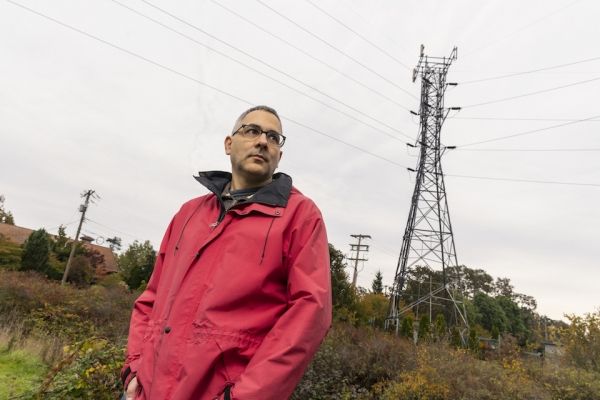When University of Victoria chemist Dennis Hore looks to the sky he sees potential for a greener, more sustainable future.
That’s because Hore and his research team are investigating materials they hope will make up the next generation insulators for the electrical power grid.
Overhead transmission wires carry electricity in our communities, and insulators—the stacked disk-like objects—are an important part of the infrastructure. The life cycle of traditional ceramic insulators is coming to an end, says Hore, whose innovations in materials science are paving the way for a deeper understanding of the chemical and molecular make up of insulator materials and creating new ways to measure their performance using high voltage testing and modelling systems.
Ceramic insulators take in water and eventually crack, typically giving them a life expectancy of up to about 50 years says Hore. This makes finding a more resilient replacement crucially important. Hore is inspecting the material properties of new insulators that he hopes can withstand extreme weather and environmental stress, contributing to products that deliver stable, cost-effective power in rural and urban areas.
Continue reading at University of Victoria.
Image via University of Victoria.


